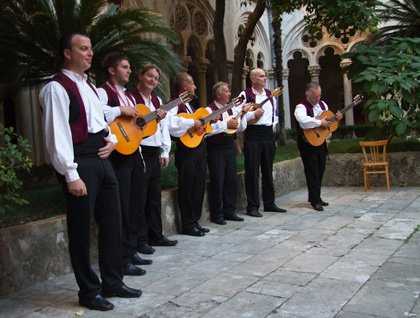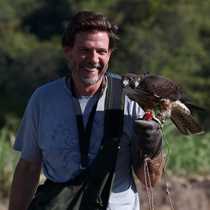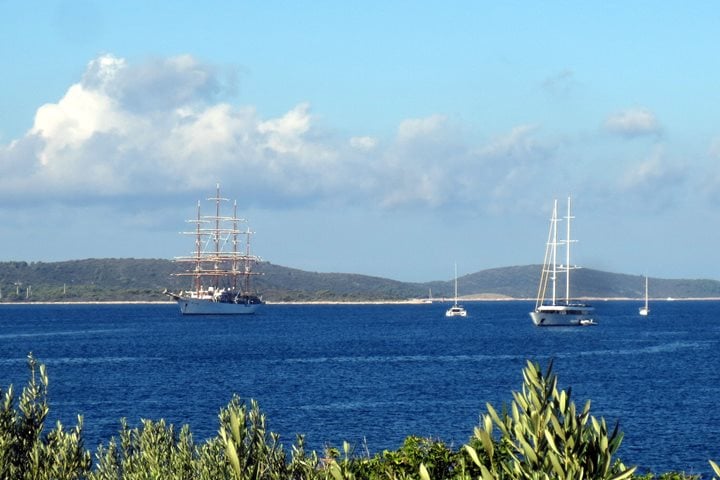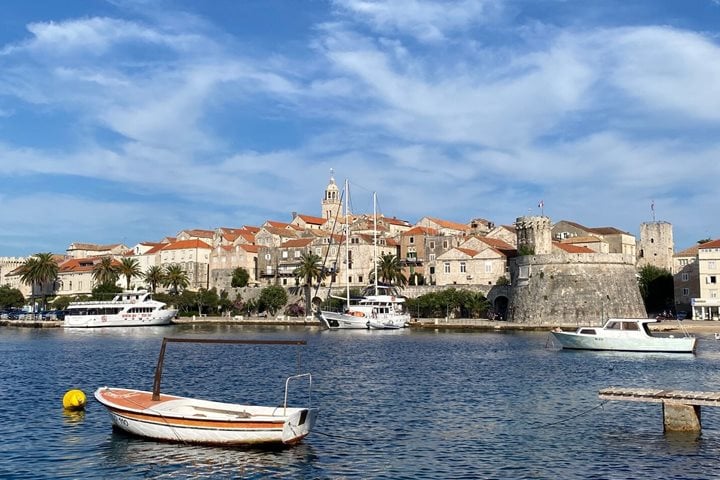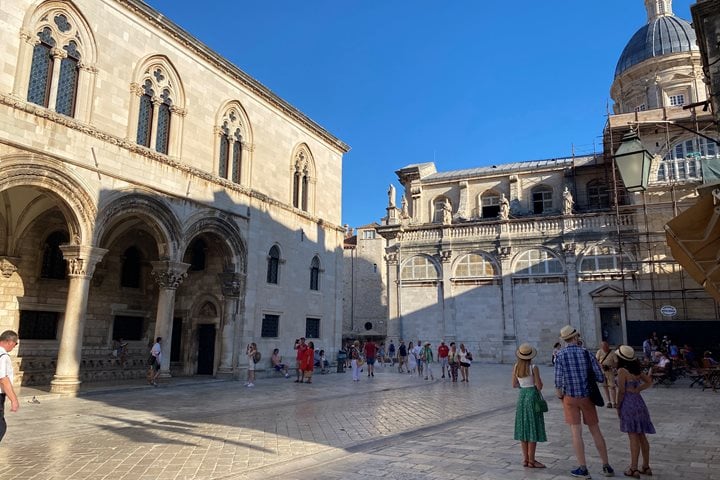Many well known people have admired the beauty of Dubrovnik. George Bernard Shaw said that those who seek paradise on earth should seek it in Dubrovnik. So that is exactly what we did today. Early in the morning we anchored off the Old Town, simply called “the City” (Grad) by those who live there. The town of Dubrovnik, as a whole, has been on the UNESCO World Heritage list for a long time - since 1979.
We started our Old Town walking tour, but selecting landmarks is not an easy task in Dubrovnik. First we reached Stradun, Dubrovnik`s main promenade with baroque houses with green shutters and shops on the ground floor and kitchens on the highest floor. We enjoyed the stroll down the main square Luza where we saw the Gothic – Renaissance Sponza Palace, one of few buildings that survived the disastrous earthquake of 1667. We couldn’t miss the church of Saint Blaise, patron saint of the town since the 11th century who, according to legend, saved the town from Venetian attack. There are few towns that have such a strong relationship with their saint, but in Dubrovnik there are numerous statues of Saint Blaise displayed all over town. We continued towards Rector’s Palace, the governmental seat of the historic Republic of Ragusa. But that palace was not only the residence of the Rector – who was allowed to rule for only one month. It was also a place to store gun powder, a jail, a courtroom and a public square.
We explored the small and narrow alleys and passed by the first orphanage in Europe (15th century) in order to reach the Franciscan Monastery, its landmark being a beautiful Romanesque – Gothic cloister and one of the oldest pharmacies in Europe, founded in 1317.
With all the positive energy that we felt in Dubrovnik, we decided to hike up the 1940 m long remarkable city walls that are one of the most famous fortification systems in Europe. Of course, we’ll keep it a secret that we did just the southern half – we could have done the whole wall, but there are simply too many things Dubrovnik offers and the day lasts only 24 hours.
In the evening we had the great privilege and pleasure to listen to a wonderful klapa concert in the cloister of the 14th century Dominican Monastery. The word “klapa” actually means “a group of friends” and these are singing groups with roots in traditional taverns. Surrounded by orange trees we enjoyed a performance by the group Klapa Ostro, who showed us why the traditional art of a cappella singing is so popular in southern Croatia. As our expedition leader put it – it’s even more popular than soccer. That might be incredible, but it is true! Their one hour performance of traditional, but also very popular, local songs about love, sea and their homeland of Dalmatia evoked pure emotions, real Dalmatian style.

